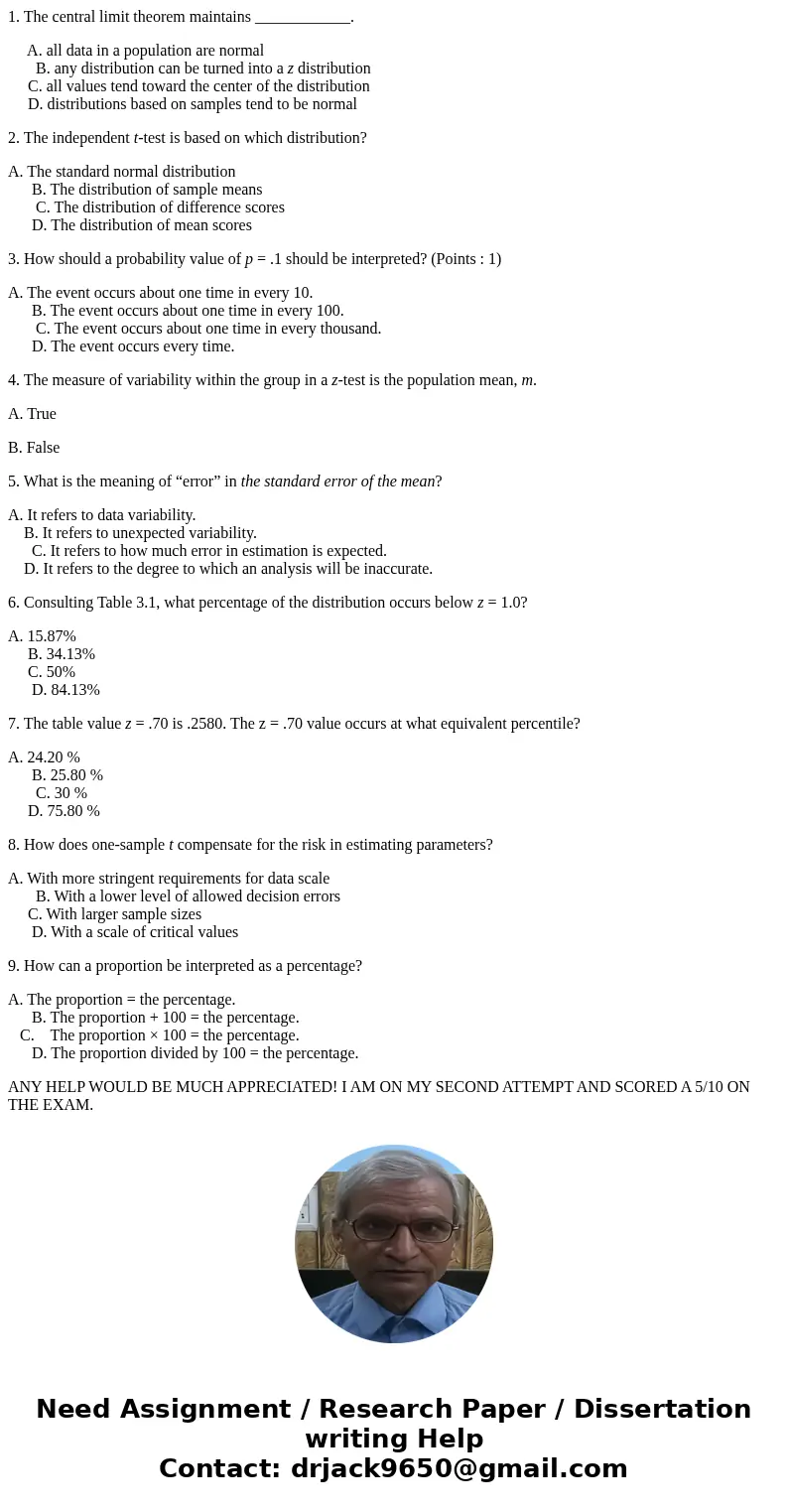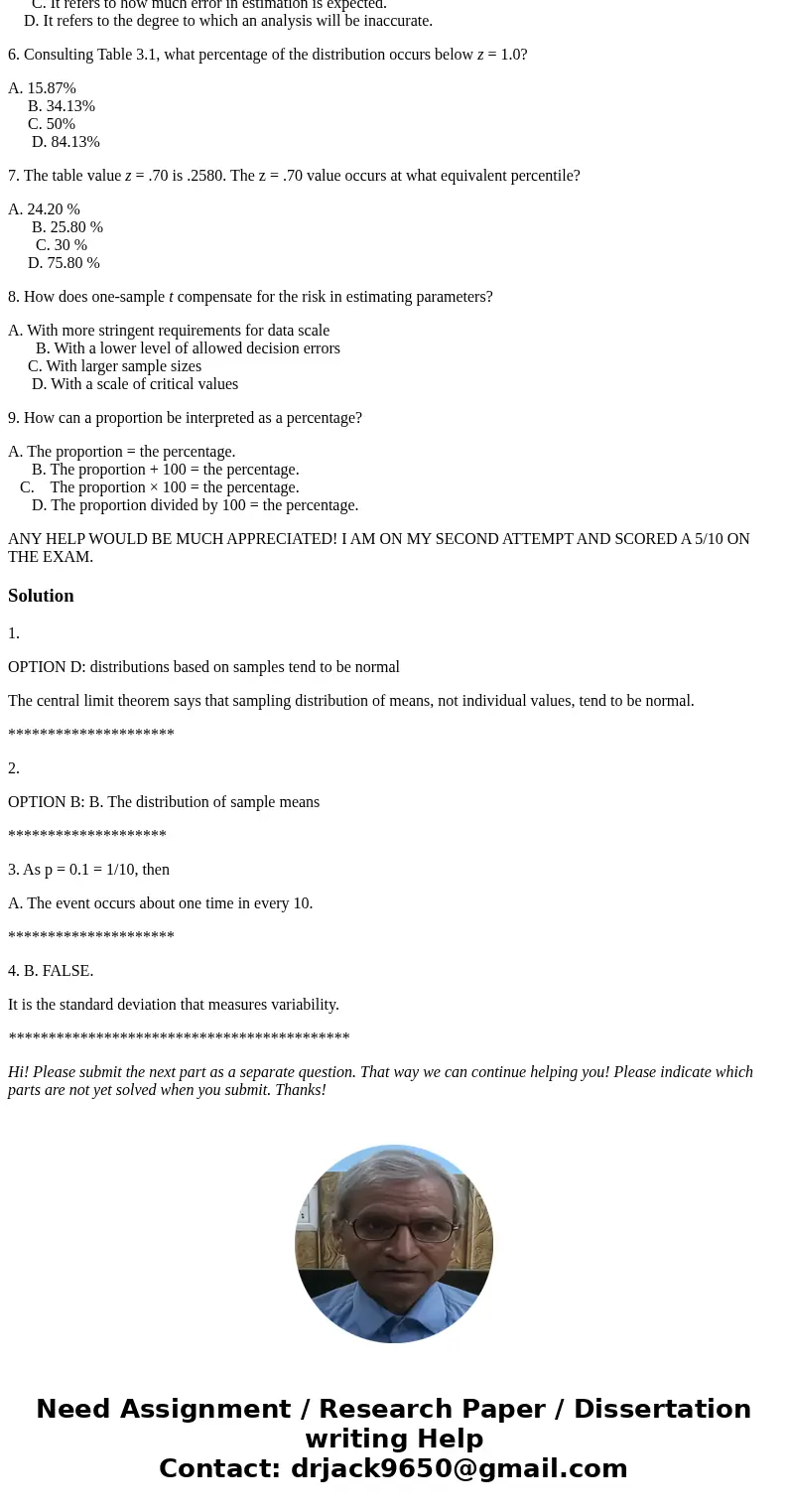1 The central limit theorem maintains A all data in a popul
1. The central limit theorem maintains ____________.
A. all data in a population are normal
B. any distribution can be turned into a z distribution
C. all values tend toward the center of the distribution
D. distributions based on samples tend to be normal
2. The independent t-test is based on which distribution?
A. The standard normal distribution
B. The distribution of sample means
C. The distribution of difference scores
D. The distribution of mean scores
3. How should a probability value of p = .1 should be interpreted? (Points : 1)
A. The event occurs about one time in every 10.
B. The event occurs about one time in every 100.
C. The event occurs about one time in every thousand.
D. The event occurs every time.
4. The measure of variability within the group in a z-test is the population mean, m.
A. True
B. False
5. What is the meaning of “error” in the standard error of the mean?
A. It refers to data variability.
B. It refers to unexpected variability.
C. It refers to how much error in estimation is expected.
D. It refers to the degree to which an analysis will be inaccurate.
6. Consulting Table 3.1, what percentage of the distribution occurs below z = 1.0?
A. 15.87%
B. 34.13%
C. 50%
D. 84.13%
7. The table value z = .70 is .2580. The z = .70 value occurs at what equivalent percentile?
A. 24.20 %
B. 25.80 %
C. 30 %
D. 75.80 %
8. How does one-sample t compensate for the risk in estimating parameters?
A. With more stringent requirements for data scale
B. With a lower level of allowed decision errors
C. With larger sample sizes
D. With a scale of critical values
9. How can a proportion be interpreted as a percentage?
A. The proportion = the percentage.
B. The proportion + 100 = the percentage.
C. The proportion × 100 = the percentage.
D. The proportion divided by 100 = the percentage.
ANY HELP WOULD BE MUCH APPRECIATED! I AM ON MY SECOND ATTEMPT AND SCORED A 5/10 ON THE EXAM.
Solution
1.
OPTION D: distributions based on samples tend to be normal
The central limit theorem says that sampling distribution of means, not individual values, tend to be normal.
*********************
2.
OPTION B: B. The distribution of sample means
********************
3. As p = 0.1 = 1/10, then
A. The event occurs about one time in every 10.
*********************
4. B. FALSE.
It is the standard deviation that measures variability.
*******************************************
Hi! Please submit the next part as a separate question. That way we can continue helping you! Please indicate which parts are not yet solved when you submit. Thanks!


 Homework Sourse
Homework Sourse